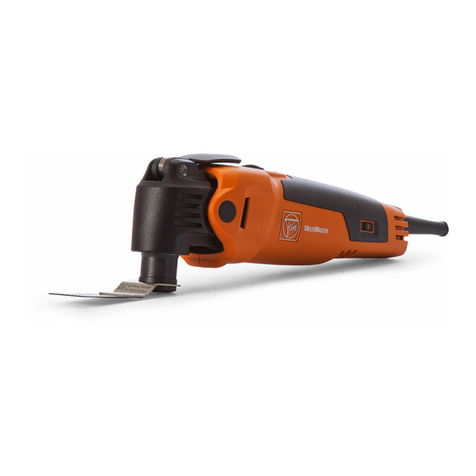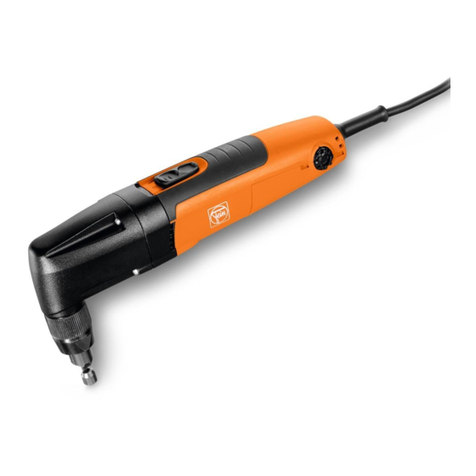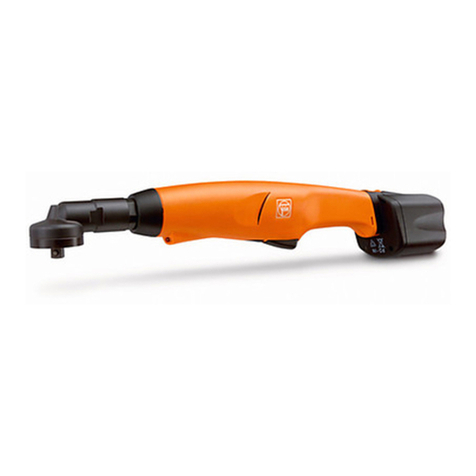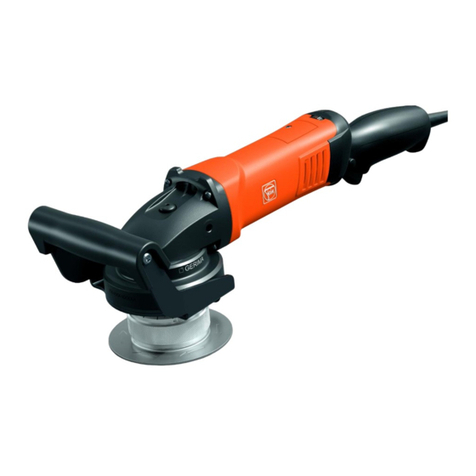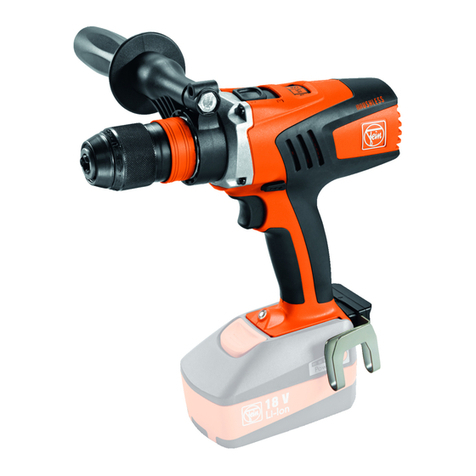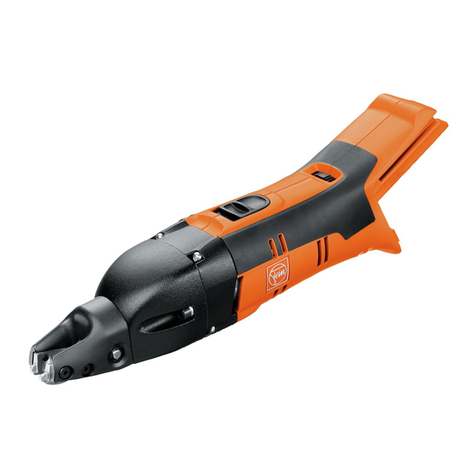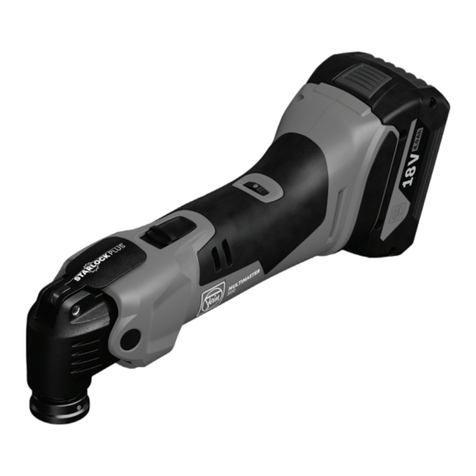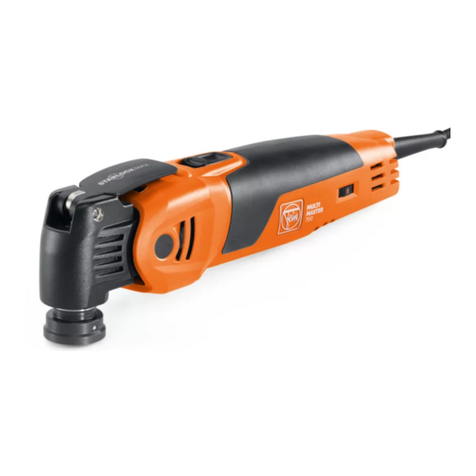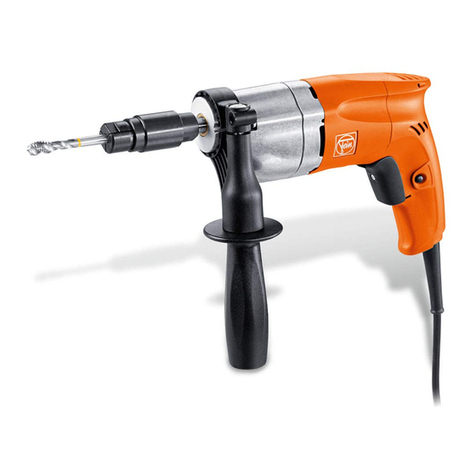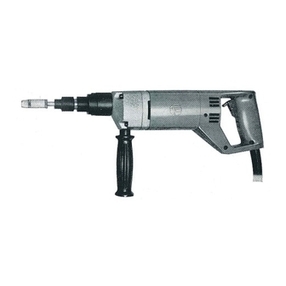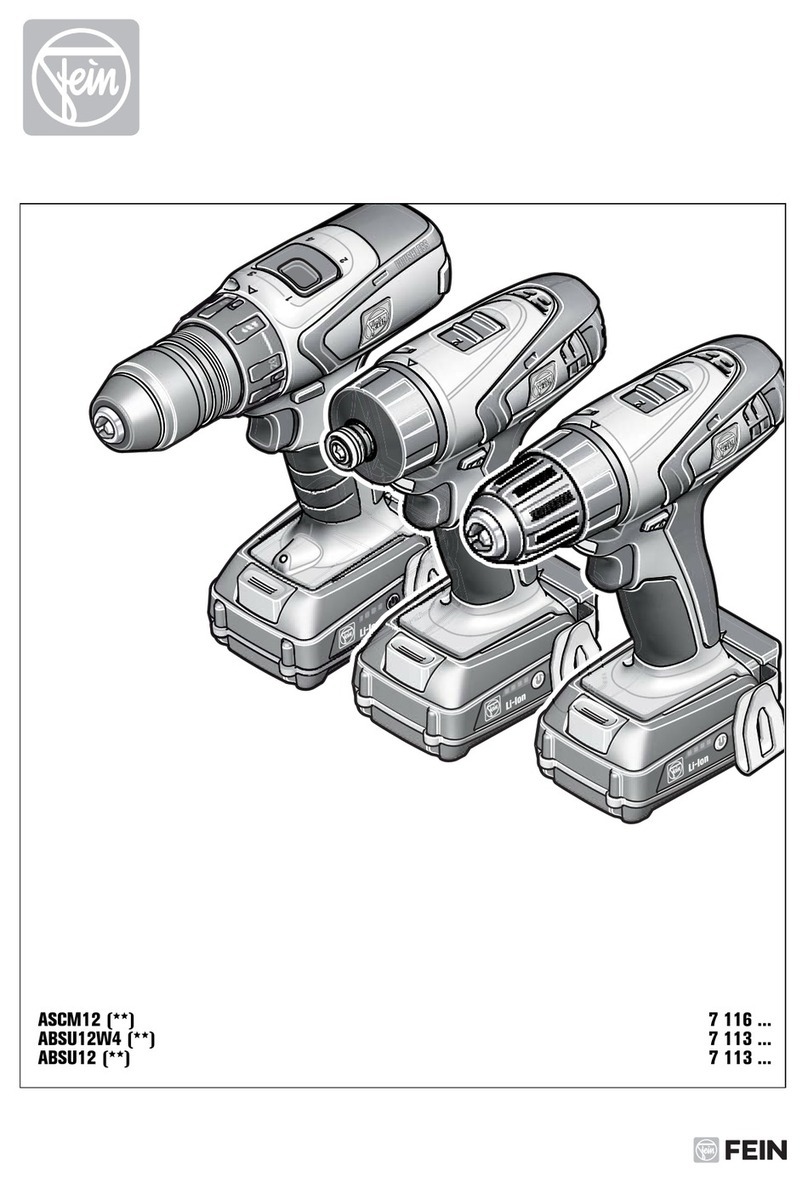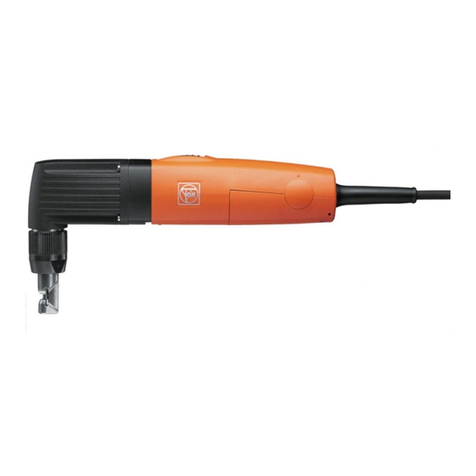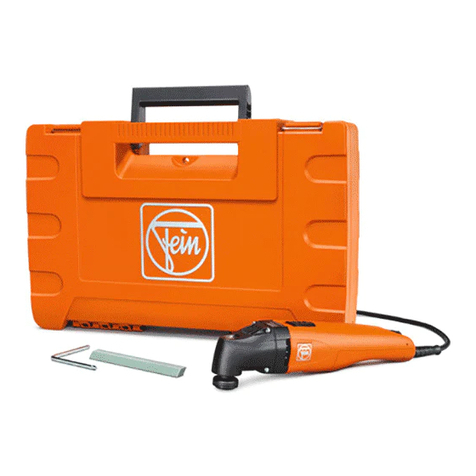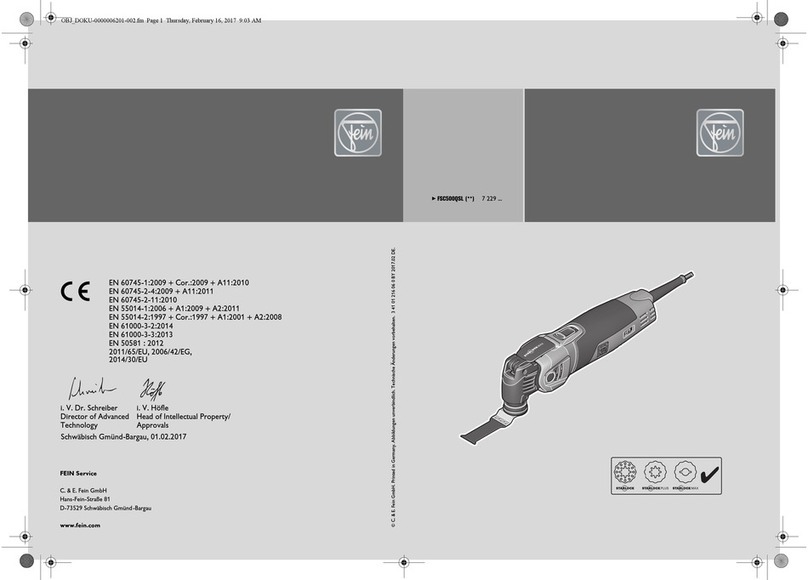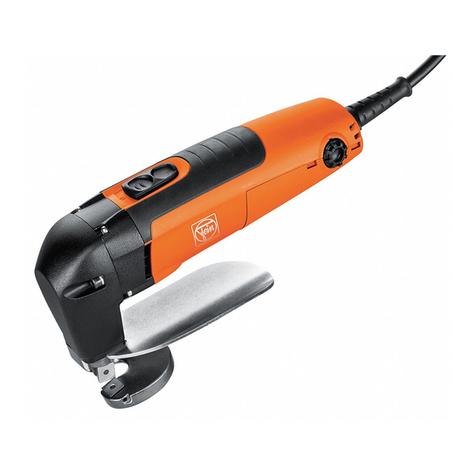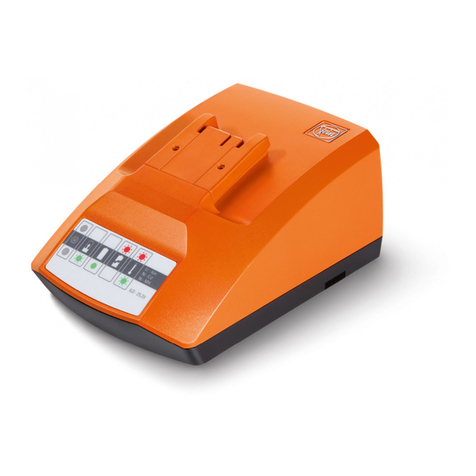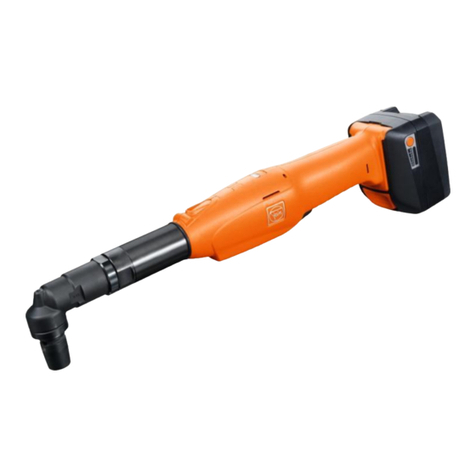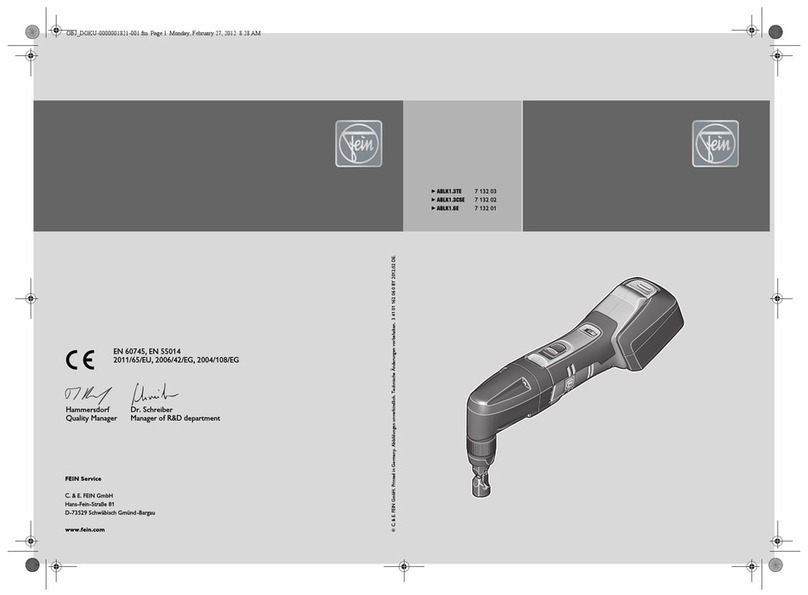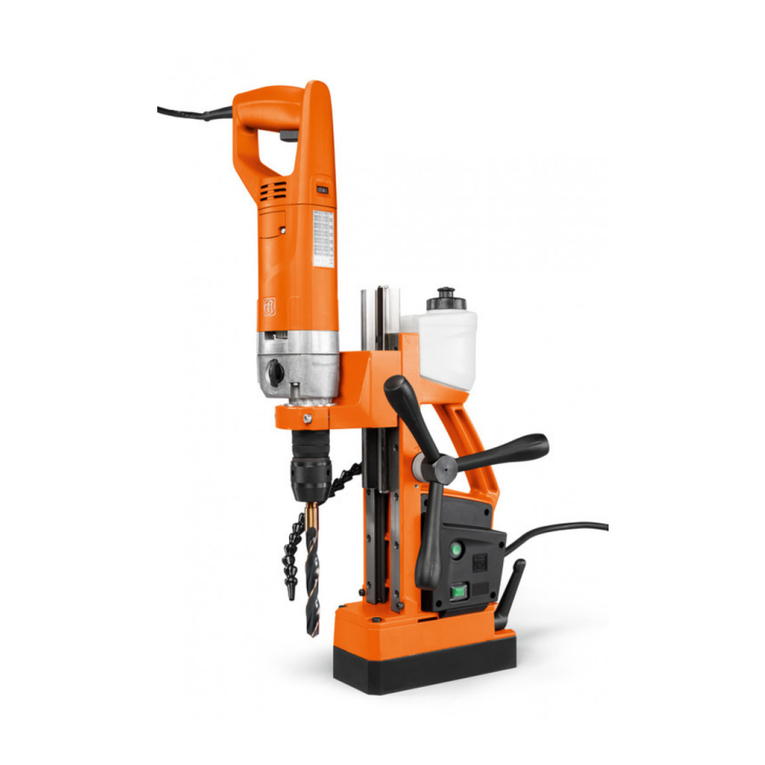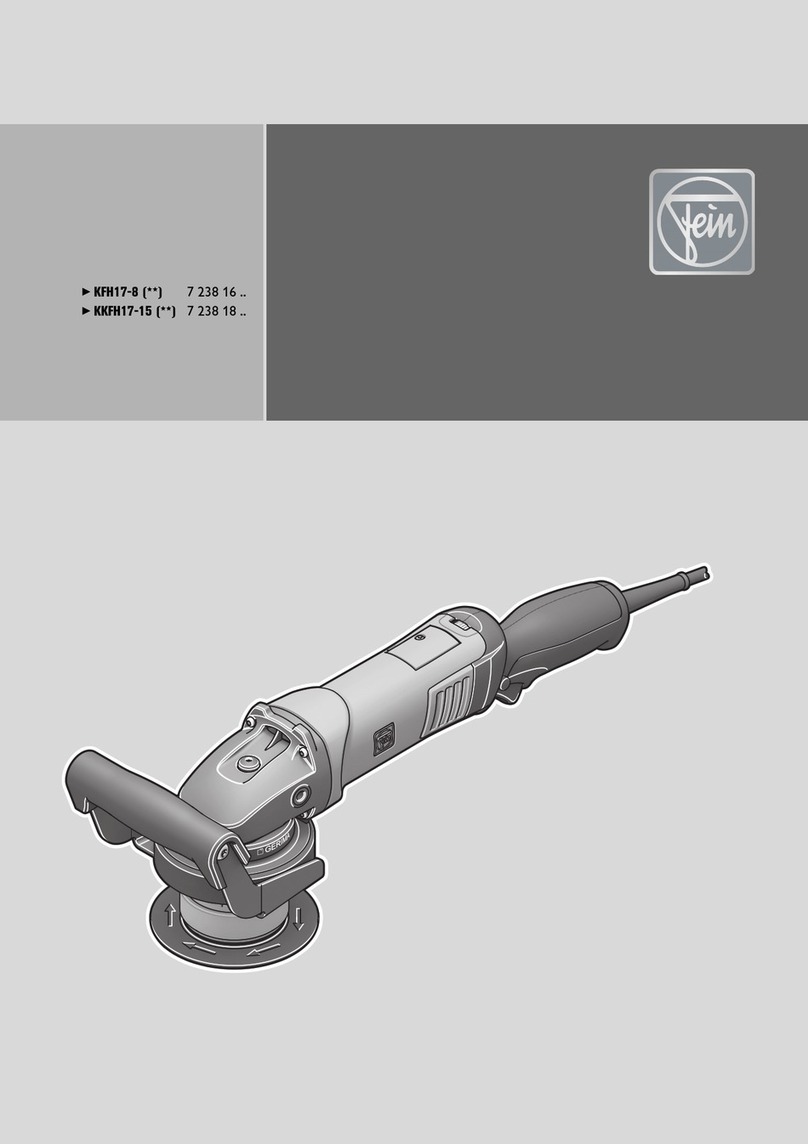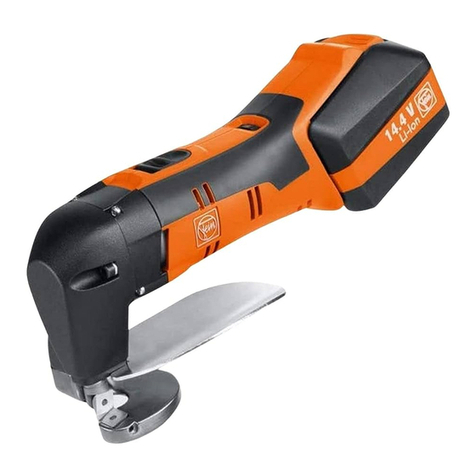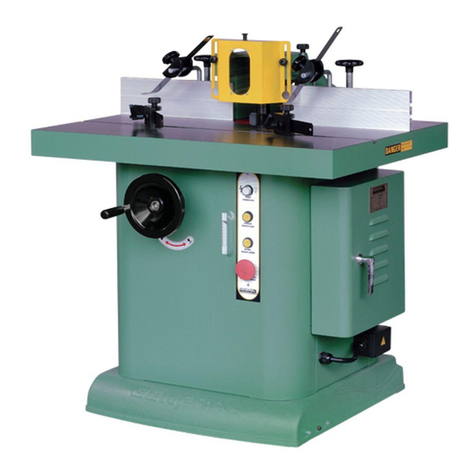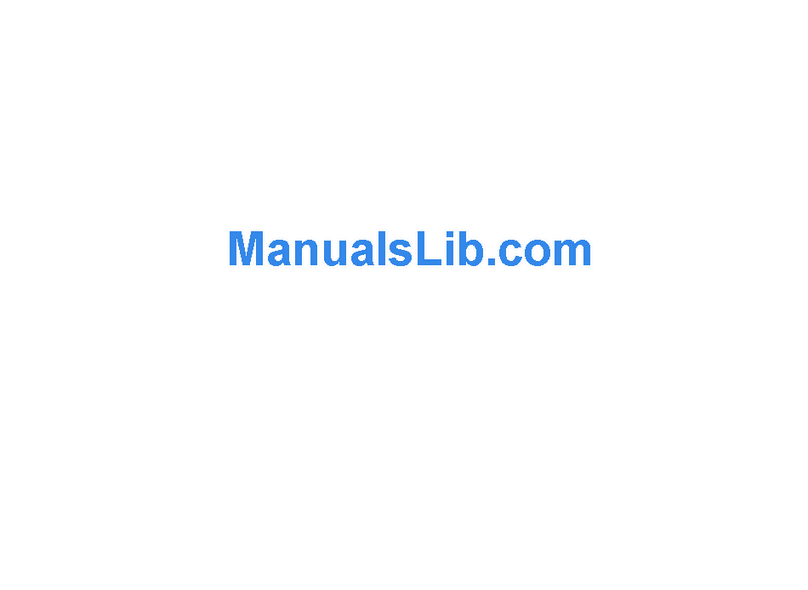7
de
Sicherheitshinweise.
1) Arbeitsplatz
a)
Halten Sie Ihren Arbeitsbereich sauber und au ge-
räumt.
Unordnung und unbeleuchtete Arbeitsberei-
che können zu Unfällen führen
b)
Arbeiten Sie mit dem Drucklu twerkzeug nicht in explo-
sionsge ährdeter Umgebung, in der sich brennbare
Flüssigkeiten, Gase oder Stäube be inden.
Druckluft-
werkzeuge erzeugen Funken, die den Staub oder die
Dämpfe entzünden können
c)
Halten Sie Kinder und andere Personen während der
Benutzung des Drucklu twerkzeugs ern.
Bei Ablen-
kung können Sie die Kontrolle über das Druckluft-
werkzeug verlieren
2) Sicherheit im Umgang mit Drucklu t
a)
Kontrollieren Sie regelmäßig die Drucklu tversorgung.
Schützen Sie den Schlauch vor Knicken, Verengen,
Hitze und schar en Kanten. Ziehen Sie die Schlauch-
schellen est an. Lassen Sie beschädigte Schläuche und
Kupplungen so ort instand setzen.
Bei schadhafter
Luftversorgung kann der Druckluftschlauch herum-
schlagen und zu Verletzungen führen Aufgewirbel-
ter Staub oder Späne können Augenverletzungen
verursachen
3) Sicherheit von Personen
a)
Seien Sie au merksam, achten Sie darau , was Sie tun,
und gehen Sie mit Vernun t an die Arbeit mit einem
Drucklu twerkzeug. Benutzen Sie das Drucklu twerk-
zeug nicht, wenn Sie müde sind oder unter dem Ein luss
von Drogen, Alkohol oder Medikamenten stehen.
Ein
Moment der Unachtsamkeit beim Gebrauch des
Druckluftwerkzeugs kann zu ernsthaften Verletzun-
gen führen
b)
Tragen Sie persönliche Schutzausrüstung und immer
eine Schutzbrille.
Das Tragen persönlicher
Schutzausrüstung, wie Staubmaske, rutschfeste Si-
cherheitsschuhe, Schutzhelm oder Gehörschutz, je
nach Art und Einsatz des Druckluftwerkzeugs, ver-
ringert das Risiko von Verletzungen
c)
Vermeiden Sie eine unbeabsichtigte Inbetriebnahme.
Vergewissern Sie sich, dass der Schalter in der Position
„AUS“ ist, bevor Sie das Drucklu twerkzeug an das
Drucklu tnetz anschließen.
Wenn Sie beim Tragen
des Druckluftwerkzeugs den Finger am Schalter ha-
ben oder das Druckluftwerkzeug eingeschaltet an
die Druckluftversorgung anschließen, kann dies zu
Unfällen führen
d)
Ent ernen Sie Einstellwerkzeuge oder Schrauben-
schlüssel, bevor Sie das Drucklu twerkzeug einschal-
ten.
Ein Einstellwerkzeug oder Schlüssel, der sich in
einem sich bewegenden Teil des Druckluftwerk-
zeugs befindet, kann zu Verletzungen führen
e)
Überschätzen Sie sich nicht. Sorgen Sie ür einen siche-
ren Stand und halten Sie jederzeit das Gleichgewicht.
Dadurch können Sie das Druckluftwerkzeug in uner-
warteten Situationen besser kontrollieren
f)
Tragen Sie geeignete Kleidung. Tragen Sie keine weite
Kleidung oder Schmuck. Halten Sie Haare, Kleidung und
Handschuhe ern von sich bewegenden Teilen.
Lo-
ckere Kleidung, Schmuck oder lange Haare können
von sich bewegenden Teilen erfasst werden
4) Sorg ältiger Umgang und Gebrauch von
Drucklu twerkzeugen
a)
Überlasten Sie das Drucklu twerkzeug nicht. Verwen-
den Sie ür Ihre Arbeit das da ür bestimmte Einsatz-
werkzeug.
Mit dem passenden Einsatzwerkzeug ar-
beiten Sie besser und sicherer im angegebenen Leis-
tungsbereich
b)
Benutzen Sie kein Drucklu twerkzeug, dessen Schalter
de ekt ist.
Ein Druckluftwerkzeug, das sich nicht
mehr ein- oder ausschalten lässt, ist gefährlich und
muss repariert werden
c)
Unterbrechen Sie die Energiezu uhr, bevor Sie Druck-
lu twerkzeugeinstellungen vornehmen, Zubehörteile
wechseln oder das Drucklu twerkzeug weglegen.
Diese Vorsichtsmaßnahme verhindert den unbeab-
sichtigten Start des Gerätes
d)
Bewahren Sie unbenutzte Drucklu twerkzeuge außer-
halb der Reichweite von Kindern au . Lassen Sie Perso-
nen das Drucklu twerkzeug nicht benutzen, die mit die-
sem nicht vertraut sind oder diese Anweisungen nicht
gelesen haben.
Druckluftwerkzeuge sind gefährlich,
wenn Sie von unerfahrenen Personen benutzt wer-
den
e)
P legen Sie das Drucklu twerkzeug mit Sorg alt. Kon-
trollieren Sie, ob bewegliche Drucklu twerkzeugteile
einwand rei unktionieren und nicht klemmen, ob Teile
gebrochen oder so beschädigt sind, dass die Funktion
des Drucklu twerkzeugs beeinträchtigt ist. Lassen Sie
beschädigte Teile vor dem Einsatz des Drucklu twerk-
zeugs reparieren.
Viele Unfälle haben ihre Ursache in
schlecht gewarteten Druckluftwerkzeugen
f)
Halten Sie Schneidwerkzeuge schar und sauber.
Sorg-
fältig gepflegte Schneidwerkzeuge mit scharfen
Schneidkanten verklemmen sich weniger und sind
leichter zu führen
g)
Verwenden Sie das Drucklu twerkzeug, das Zubehör,
die Einsatzwerkzeuge usw. entsprechend diesen An-
weisungen und so, wie es ür diesen speziellen Druck-
lu twerkzeugtyp vorgeschrieben ist. Berücksichtigen
Sie dabei die Arbeitsbedingungen und die auszu üh-
rende Tätigkeit.
Der Gebrauch von Druckluftwerk-
zeugen für andere als die vorgesehenen Anwendun-
gen kann zu gefährlichen Situationen führen
h)
Halten Sie das Drucklu twerkzeug est mit beiden Hän-
den und sorgen Sie ür einen sicheren Stand.
Das
Druckluftwerkzeug wird mit zwei Händen sicherer
geführt
i)
Sichern Sie das Werkstück.
Ein mit einer Spannvor-
richtung gehaltenes Werkstück ist sicherer gehalten
als in Ihrer Hand
j)
Bearbeiten Sie kein asbesthaltiges Material.
Asbest
gilt als krebserregend
3 41 01 101 06 0.book Seite 7 Freitag, 4. April 2008 8:33 08
